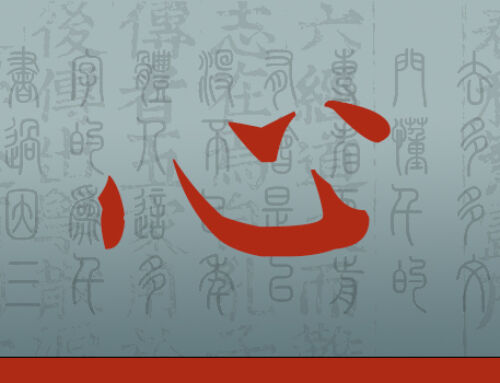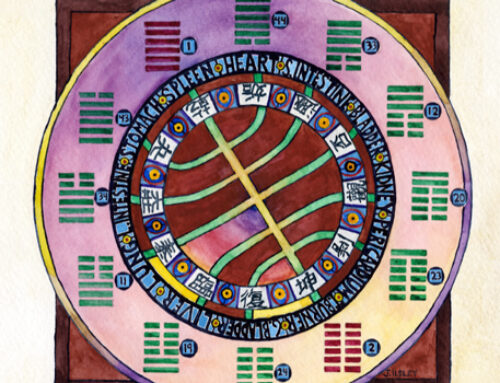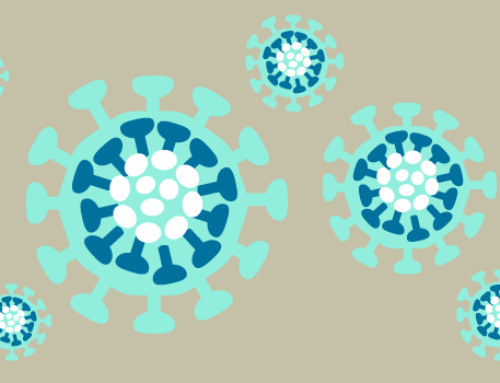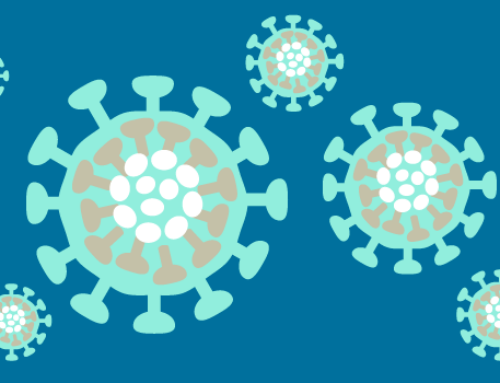By Ban Gu
fl. 1st Century CE
Translated by Heiner Fruehauf
National University of Natural Medicine, College of Classical Chinese Medicine
情性者,何謂也?性者,陽之施;情者,陰之化也。人稟陰陽氣而生,故內懷五性六情。情者,靜也,性者,生也,此人所稟六氣以生者也。故《鉤命決》曰:「情生於陰,欲以時念也;性生於陽,以就理也。陽氣者仁,陰氣者貪,故情有利欲,性有仁也。
What is the nature of our emotional disposition (qingxing)? Our moral values (xing) represent an expression of yang, while our emotional urges (qing) are a transformation of yin. Human beings are born into this world as an amalgam of yin and yang, and thus contain within us five core virtues (wuxing) and six basic emotional urges (liuqing). The word for emotion, qing (情), contains within it the meaning of jing (静)—that which is supposed to remain tranquil and kept under wraps. The character for virtue, xing (性), on the other hand, contains the attribute sheng (生)—that which is meant to grow and reveal itself. Thus the Goumingjue (Secrets for Unifying the Forces of Life) states:
All emotional turmoil is born from yin, and it is from here that obsessive impulses arise in waves; all sense of virtue is born from yang, and it is here where the drive toward a life of cultivation hails from. The momentum of yang is by nature compassionate, while the energy of yin is suffused with greed. That is why the emotions are at their core selfish and agenda-ridden, while the virtues are by nature selfless and full of compassion.
五性者何?謂仁、義、禮、智、信也。仁者,不忍也,施生愛人也;義者,宜也,斷決得中也;禮者,履也,履道成文也;智者,知也,獨見前聞,不惑於事,見微者也;信者,誠也,專一不移也。故人生而應八卦之體,得五氣以為常,仁、義、禮、智、信是也。
What are the so-called five virtues (wuxing)? They are compassion (ren), selflessness (yi), propriety (li), wisdom (zhi), and integrity (xin). Compassion (ren 仁) is the opposite of indifference and cruelty (ren 忍) , it manifests as kindness toward all creatures and acts of loving and helping others. Selflessness (yi 義) is humanity’s sense of justice (yi 宜), our internal compass to do the right thing. Propriety (li 禮) is the fulfillment of our destiny through action (lü 履), the daily walking on the path of life that over time evolves into a pattern of goodness. Wisdom (zhi 智) is knowledge (zhi 知), the unique ability to draw from past experiences and read subtle clues while remaining impartial to the chatter of worldly opinion. Integrity (xin 信) is sincerity (cheng 誠), unwavering focus and conviction. Human existence, therefore, resonates with the basic nature of the cosmos as described by the eight trigrams. We live in a universe where we are surrounded, shaped and nourished by a spectrum of five positive qualities, namely compassion, selflessness, propriety, wisdom and integrity.
六情者,何謂也?喜、怒、哀、樂、愛、惡謂六情,所以扶成五性。
And what are the so-called six emotions (liuqing)? These are excitement (xi 喜), anger (nu 怒), sorrow (ai 哀), pleasure (le 樂), love (ai 愛), and hate (wu 惡), and they are inextricably intertwined with the five higher virtues.
性所以五,情所以六者何?人本含六律五行氣而生,故內有五藏六府,此情性之所由出入也。《樂動聲儀》曰:“官有六府,人有五藏。”
How come that there are five virtues and six emotions? Humanity is engendered by the energetic spectrum of the five phase influences (wuxing 五行) and the six pitch patterns (liulü 六律) in our cosmic environment, and in correspondence to these the microcosm of our bodies is replete with five storage (zang) organs and six eliminatory (fu) organs. These are the functional entities that are charged with receiving [the virtues] and excreting [the emotions]. The Yuedong shengyi (Musical Motion and the Principle of Sound) states, moreover: “ There are six ministries in the sphere of government and five storage organs in the microcosm of the human body.”
五藏者何也?謂肝、心、肺、腎、脾也。肝之爲言幹也;肺之爲言費也,情動得序;心之爲言任也,任於恩也;腎之爲言寫也,以竅寫也;脾之爲言辨也,所以積精禀氣也。五藏,肝仁,肺義,心禮,腎智,脾信也。
What, now, are the five zang organs and their respective storage functions? They are the Liver, the Heart, the Lung, the Kidney, and the Spleen. The name of the Liver (gan 肝) has military connotations, underscoring its assertive nature and forward momentum (gan 干). The name of the Lung (fei 肺) refers to the purpose of letting go (fei 費), characterizing its moderating role in moments of emotional agitation. The name of the Heart (xin 心) is associated with the qualities of nobility and merit (ren 任), reflecting our innate desire to be loving and kind. The name of the Kidney (shen 腎) encompasses the quality of downward momentum (xie 寫), particularly the function of discharging through the urinary passage. The name of the Spleen (pi 脾) is associated with the art of prudent selection (bian 辯), alluding to its ability to gather and concentrate the vital essences of jing and qi. The five zang organs and their respective storage functions are therefore as follows: The Liver stores compassion, the Lung stores selflessness, the Heart stores propriety, the Kidney stores wisdom, and the Spleen stores integrity.
肝所以仁者何?肝,木之精也;仁者,好生。東方者陽也,萬物始生,故肝象木,色青而有枝葉。目爲之候何?目能出淚而不能内物,木亦能出枝葉不能有所内也。
What is it that makes the Liver a vessel for the virtue of compassion? The Liver represents the quintessence of the phase element Wood. “Compassion” means to love and care for every living creature. The East [direction associated with Wood] is aligned with the functional energy of yang and the sun; this is the place where all living things are kindled into existence. Therefore, the anatomical liver manifests some of the characteristics of the plant world: its color has a greenish sheen and it exhibits “leaves.” By the same token, what makes the eyes an officer of the Liver? The eyes can excrete tears but are not able to absorb external substances, just like tree trunks shoot out branches but cannot envelop external objects.
肺所以義者何?肺者,金之精;義者,斷決。西方亦金,成萬物也,故肺象金,色白也。鼻爲之候何?鼻出入氣,高而有竅,山亦有金石累積,亦有孔穴,出雲布雨以潤天下,雨則雲消,鼻能出納氣也。
What is it that makes the Lung a vessel for the virtue of selflessness? The Lung represents the quintessence of the phase element Metal. Selflessness, at its core, is solid self-restraint. The West is characterized by Metal, because it is here that the material world achieves maturity and becomes firm. That is why the anatomical lung manifests some of the characteristics of the mineral realm: its color has a whitish glint. By the same token, what makes the nose an officer of the Lung? The nose is located in a high position and exhibits holes through which air moves in and out. Mountains, in turn, are the repository of minerals and metals in nature. They also have apertures in the form of caves, and it is from here that the breath of nature emerges in the form of clouds and rain. In the dimension of earth, everything is moistened from this lofty place. Once it rains, the clouds disburse. Inhaling and exhaling through the nose is similar to this process in nature.
心所以爲禮何?心,火之精也。南方尊陽在上,卑陰在下,禮有尊卑,故心象火,色赤而銳也,人有道尊,天本在上,故心下銳也。耳爲之候何?耳能遍内外、别音語,火照有似於禮,上下分明。
What is it that makes the Heart a vessel for propriety and our innate recognition of the sacred? The Heart represents the quintessence of the phase element Fire. The South [direction associated with Fire] is characterized by a dominance of solar yang forces that have decisively eclipsed the cold and dark forces of yin. Propriety, in turn, is defined by a clear delimitation of higher and lower states of existence. Therefore, the anatomical heart manifests some of the characteristics of fire: its color is reddish and its movements are dynamic. It is a distinctly human quality to revere what is sacred. Heaven is by its very nature exalted, and the Heart resonates in the form of spirited movement below. By the same token, what makes the ears officers of the Heart? The ears connect inside and outside, and they can differentiate subtle nuances in sound and language. The illuminating function of Fire, furthermore, is similar to the power of propriety and its respect for the sacred: both clearly delineate what is high and sublime, and what is low and insignificant.
腎所以智何?腎者,水之精。智者,進而止無所疑惑。水亦進而不惑,北方水,故腎色黑;水陰,故腎雙。竅爲之候何?竅能瀉水,亦能流濡。
What is it that makes the Kidney a vessel for wisdom? The Kidney represents the quintessence of the phase element Water. Wisdom is characterized by a flow of action unhampered by doubt or confusion. Similar to this virtue, water also flows forward without any sense of disorientation. Water is associated with the direction of North [which, in turn, is correlated with the color black]. Therefore, the anatomical kidneys glisten blackishly. Water also stands for the [reflective and dualistic] forces of yin, reflected in the pair form of the kidneys. By the same token, what makes the urinary orifice an officer of the Kidney? The urinary passage can discharge Water essences and excrete urine.
脾所以信何?脾者,土之精也。土尚任養萬物爲之象,生物無所私,信之至也。故脾象土,色黄也。口爲之候何?口能啖嚐,舌能知味,亦能出音聲,吐滋液。
What is it that makes the Spleen a vessel for integrity? The Spleen represents the quintessence of the phase element Earth. Its function is symbolically expressed by the image of an ever giving and all-nourishing earth that generates and supports every single living thing without desiring anything in return—the essence of ultimate integrity. Therefore, the anatomical spleen manifests some of the characteristics of the earth: its color is yellowish. By the same token, what makes the mouth an officer of the Spleen? The mouth has the ability to savor a multitude of foods and the tongue can distinguish all flavors. Furthermore, the mouth produces sounds and voices and excretes nutritive saliva.
故《元命苞》曰:“目者肝之使,肝者木之精,蒼龍之位也。鼻者肺之使,肺者金之精,制割立斷。耳者心之候,心者火之精,上爲張星。陰者腎之寫,腎者水之精,上爲虛危。口者脾之門戶,脾者土之精,上爲北鬥,主變化者也。” 或曰:口者心之候,耳者腎之候。或曰:肝系於目,肺系於鼻,心系於口,脾系於舌,腎系於耳。
Therefore, the Yuanming bao (Astrological Synthesis) states: “The eyes are deputies of the Liver, and the Liver represents the quintessential manifestation of the phase element Wood; the macrocosmic position is that of the [Eastern] Blue Green Dragon constellation. The nose is the deputy of the Lung, and the Lung represents the quintessential manifestation of the phase element Metal; it cuts down, curtails and adjudicates. The ears are officers of the Heart, and the Heart represents the quintessence of the phase element Fire; above, this principle is represented by the Zhang constellation [in the Southern Red Phoenix]. The genitals are the drain of the Kidney, and the Kidney represents the quintessential manifestation of the phase element Water; above, this principle is represented by the Xu and Wei constellations [in the Northern Black Turtle]. The Mouth is the gateway of the Spleen, and the Spleen represents the quintessential manifestation of the phase element Earth; above, this principle is represented by the Big Dipper [at the center of the sky]. It rules the cycle of transformation, all the way from birth to death.” Other sources say that the mouth is the officer of the heart, and the ears are the officers of the Kidney. Or, yet another source states: “The Liver is linked with the eyes, the Lung is linked with the nose, the Heart is linked with the mouth, the Spleen is linked with the tongue, and the Kidney is linked with the ears.”
六府者,何謂也?謂大腸、小腸、胃、膀胱、三焦、膽也。府者,謂五藏宮府也。故《禮運》記曰:“六情所以扶成五性也。”
And what are the six fu organs, and how are they defined? They are the Large Intestine, the Small Intestine, the Stomach, the Bladder, the Triple Warmer, and the Gallbladder. Fu literally means that these are the respective administrative branches of the five storage organs. Along the same lines, the Liyun (The Conveyance of Rites; chapter nine of the Liji, Book of Rites) declares: “The six emotions are assisting the development of the five virtues.”
胃者,脾之府也,脾主禀氣;胃者,穀之委也,故脾禀氣也。
The Stomach is the administrative branch of the Spleen, which is in charge of the gathering of qi. The Stomach is the collector of grain, and the Spleen’s ability to gather qi is assisted by this function.
膀胱者,腎之府也。腎者,主瀉,膀胱常能有熱,故先決難也。
The Bladder is the administrative branch of the Kidney. The Kidney is in charge of draining excess. Since the Bladder tends to run hot, it naturally is a priority to resolve issues of difficult water flow.
三焦者,包絡府也。水穀之道路,氣之所終始也。故上焦若竅,中焦若編,下焦若瀆。
The Triple Warmer is the administrative branch of the Pericardium. It is the passageway of grain and water, and the place where the circulation of qi begins and comes to an end. Therefore, the Upper Warmer is like the [heavenly] void, the Middle Warmer is like a mesh [connecting higher and lower realms], and the Lower Burner is like a [earthly] gutter.
膽者,肝之府也。肝者,木之精也,主仁。仁者不忍,故以膽斷也,是以肝膽二者必有勇也。肝膽異趣,何以知相爲府也?肝者,木之精也,木之爲言牧也,人怒無不色青目腋張者,是其效也。
The Gallbladder is the administrative branch of the Liver. The Liver is the quintessential manifestation of the phase element Wood, and thus governs the virtue of compassion. Compassion is the opposite of cruelty, and the Gallbladder is thus charged with putting a stop to vicious impulses. For these respective tasks, the Liver and Gallbladder both require a certain degree of intensity. However, since the Liver and the Gallbladder appear to be pursuing divergent tasks, how do we know that they truly are partner officers within the same ministry? As stated before, the Liver is the quintessence of the phase element Wood, and one of the meanings of Wood (mu 木) is to take charge (mu 牧). When a person is in a state of impetuous fervor, s/he will invariably turn green in the face, the eyes will widen and the arms flail outward—all of these are aspects of the same assertive energy.
小腸、大腸,心肺之府也,主禮義,禮義者有分理,腸之大小相承受也。腸爲心肺主,心爲皮體主,故爲兩府也。目爲心視,口爲心談,耳爲心聽,鼻爲心嗅,是其支體主也。
The Small Intestine and the Large Intestine are the administrative branches of the Heart and the Lung. As such, they are managing the virtues of propriety and selflessness. Both of these virtues are characterized by the qualities of precision and clarity, just like the Small and Large Intestines hand off their respective tasks from one to the other in clearly delineated steps. The Intestines are the government of the internal core organs Heart and Lung, yet the Heart also rules all surface parts of the body–this is why there are two administrative branches. The eyes see for the Heart, the mouth speaks for the Heart, the ears listen for the Heart, the nose smells for the Heart—it is the master of everything, however far removed.
喜在西方,怒在東方,好在北方,惡在南方,哀在下,樂在上何?以西方萬物之成,故喜;東方萬物之生,故怒;北方陽氣始施,故好;南方陰氣始起,故惡;上多樂,下多哀也。
How is it that appreciation is associated with the West, anger is associated with the East, like is associated with the North, dislike is associated with the South, sorrow is located at the bottom, and pleasure is located on top? Appreciation is associated with the West because this is the direction where all living things become fully developed. Anger, in contrast, is associated with the East because this is the direction where all living things burst onto the plane of creation. Like is associated with the North because this is the direction where the warming and bright forces of yang qi emerge. Dislike is associated with the South because this is the direction from where the cold and dark influences of yin qi arise. Pleasure, naturally, is situated at the top, and sorrow at the bottom.
魂魄者,何謂也?魂猶伝伝也,行不休於外也,主於情。魄者,迫然著人,主於性也。魂者,芸也,情以除穢;魄者,白也,性以治内。
What, now, are the Hun and the Po spirits? The word for Hun (魂) contains the quality of drifting like clouds (伝), referring to those aspects of our soul that can float away and operate outside the limitations of the physical body; this aspect is subject to the movements of the emotions. The word for Po (魄), in contrast, alludes to the part of our soul that remains “instinctively and closely attached” (迫) to our humanity; it is subject to the permanent presence of the higher virtues. The character Hun (魂), moreover, references the rue plant (芸, an aromatic herb known for its cleansing and insect repellant properties), thereby pointing out the ability of the Hun spirits to purify and discharge emotions. The character Po (魄), on the other hand, contains the word perfection (白), underscoring the fact that our innermost being is defined by the power of virtue.
精神者,何謂也?精者,靜也,太陰施化之氣也,象火之化,任生也。神者恍惚,太陰之氣也,間松雲支體,萬化之本也。
And what, finally, is meant by the terms jing and shen? Jing (essence 精) means “that which is dense and still” (jing 靜), a manifest transformation of taiyin; it represents a condensation of the Fire of life, and is in charge of birth and fertility. Shen (spirit 神), on the other hand, is amorphous and invisible; it represents the etherial aspects of taiyin, and is inherent in everything—pine trees, clouds, and the outer reaches of the body; it is the deep source behind all surface phenomena.
© 2015 Heiner Fruehauf









Leave A Comment
You must be logged in to post a comment.